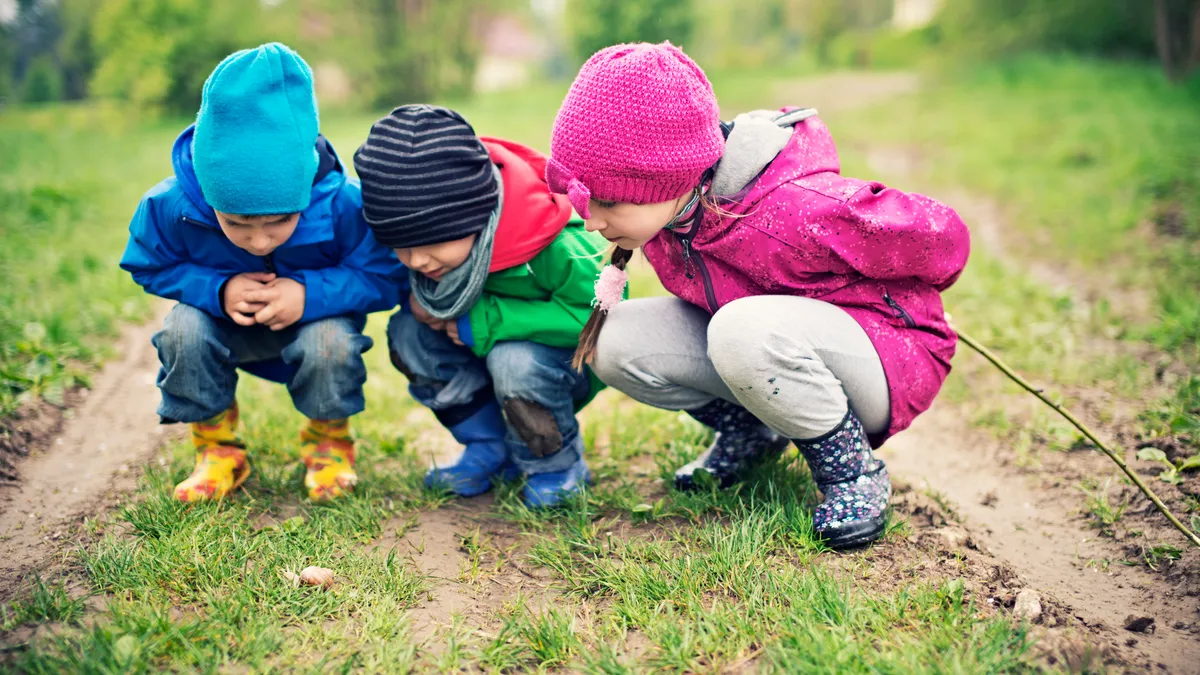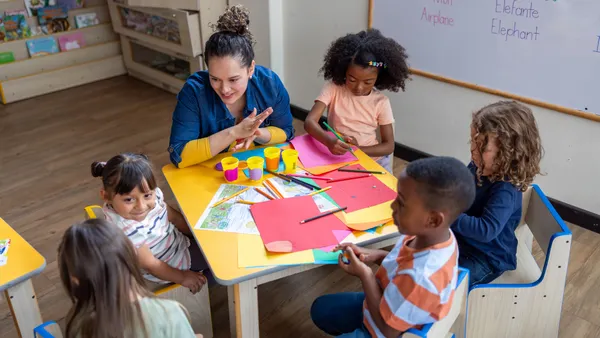Dive Brief:
- Early childhood educators can help young students develop a scientific mindset by avoiding rote memorization of facts and by introducing inquiry-based and engaging activities rooted in the sciences, said Cindy Hoisington, a project director at Education Development Center, a nonprofit that seeks improvements in education, health and economic opportunities.
- By focusing on concepts — like how light makes a shadow — rather than the memorization of facts and scientific procedures, educators can help deepen young students' foundational learning of science through exploration.
- These accessible activities can also build the confidence of early educators who may think they don't have enough expertise in scientific methods to introduce science lessons to preschoolers, said Hoisington, who is also an early elementary science educator.
Dive Insight
This approach also helps build young students' skills in collaboration, critical thinking, communication and creativity, said Hoisington, who wrote about the topic in the journal Science and Children.
Hoisington said she wants young students and their teachers to understand the "playfulness of science" and to see science as "this really dynamic process that we actually all bring a lot of background knowledge that we haven't thought of as being scientific knowledge, and that there are opportunities in our day-to-day lives at home, at school and in the community to really engage with science."
Much attention in early childhood education is centered on building students’ foundational skills in reading, writing and math. But science instruction should also have a prominent role in teaching and learning, she said.
"For teachers, it's not just the joy of doing it themselves, but when they see their students respond, that just lifts them up and makes them more excited and makes them remember why they went into teaching," Hoisington said.
Some examples of activities educators can use to increase preschoolers’ scientific knowledge include:
-
Using balls and ramps to show movement and encourage exploration of how ramps affect how balls roll
-
Encouraging students to examine their own shadows outside in sunlight or indoors with flashlights.
-
Introducing lessons about weather by making windsocks, which are cloth tubes to show the direction and strength of the wind, and rain gauges, which are tools to collect rainfall amounts.
-
Teaching about sound volume by having students whisper to each other at close range and from across the room.
-
Digging for worms to explore how they move and how they are different from humans.
Students are "really super excited about everyday phenomena that adults take for granted," Hoisington said. "When you focus on everyday phenomena, kids can explore it. It's not something they can only do in school, but it's something they can explore throughout the day, wherever they are."
These activities can be purposeful with teachers encouraging students to make close observations, ask questions and compare what they are seeing, she said.
Hoisington said there's a research-to-practice gap when it comes to early childhood science instruction. Early elementary instruction is included in the Next Generation Science Standards that were developed to help students have a high-quality K-12 science education, and many states have adopted these standards.
The Early Childhood Science Interest Forum is one way early educators are connecting to share effective strategies and quality materials for teaching science to young students. Additionally, Hoisington recommends the publicly-available Peep and the Big Wide World science curriculum supported by the National Science Foundation.
The University of Northern Iowa Regents’ Center for Early Developmental Education also has a preschool STEM curriculum centered on the movement of objects.






 Dive Awards
Dive Awards




